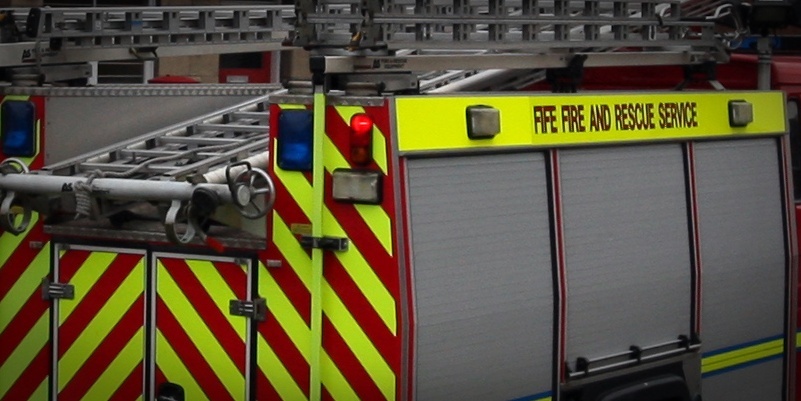Fife Fire and Rescue Service paid out almost £120,000 in overtime in five months to ensure fire engines were fully staffed.
Safety guidelines demand that five firefighters must staff the first fire engine to reach a blaze, supported by a crew of four on the second appliance.
In a report before the first meeting of the council’s new fire and rescue transition committee on Tuesday, chief fire officer Neil McFarlane conceded ”we were below target” in the first six months of financial year 2011/12, running a four-plus-four system in more than 60% of call-outs.
To reach recommended levels for the second six months of the year, he admitted introducing an overtime policy ”to make up shortages of staffing appliances”at a cost of £119,000 to the service”.
Fife’s top firefighter said council cuts had caused the staffing problems.
”The challenge we’ve had as a service has been that we were asked by Fife Council to save money and the only way we could do that was to reduce operational staff by 20,” Mr McFarlane told councillors.
”At the last Fife Council meeting before the election we were given £300,000 to recruit 12 additional firefighters, but we’re playing catch-up now,” he added.
His report, which was nodded through by councillors on the committee, said he stopped the overtime policy in March because ”it was considered to be unsustainable”.
”There remains the potential for a significant number of occasions where the initial response to an incident may have fewer firefighters than the recognised standard ” The potential exists that societal risk could increase slightly from the effects and impact of fire,” the report warns.
That view was supported up by Audit Scotland in February when the public-spending watchdog released a report which said the council’s decision to slash the Fife Fire and Rescue Service budget by between 4% and 4.5% in each of the following three years had ”the potential for some increase in community risks”.
Speaking after the meeting, Fire Brigades Union (FBU) secretary Scott McCabe said: ”We’ve always said that we don’t think the balance between community safety and firefighter safety is being struck as effectively as it could be. Overtime is good for dealing with short-term staffing deficiencies but it’s not an effective way to use the money that’s available. The bottom line is we need more firefighters. We need to bring in another ten people.”
Councillor Neil Crooks, chairman of the fire and rescue transition committee and part of the new Labour administration at Fife House, campaigned for more firefighters alongside FBU members before the local elections in May.
Mr McCabe said: ”We’ve had tentative meetings with Councillor Crooks to discuss the ridership levels and he has agreed to come to our management meetings. We understand that we need to give the new administration a chance to look at the books and find the funds.
”If we manage to convince councillors to spend money to bring in 10 firefighters, it could take at least six to eight months to train them. However, this will protect Fife fire service as it makes the transition to a become part of a single Scottish service.”
At the meeting on Tuesday, the fire and rescue transition committee also agreed to drop ‘Fife’ from the corporate branding on new equipment and uniforms purchased by the service in the coming year.
In his report, Mr McFarlane explained: ”The transition to a single Scottish Fire and Rescue Service requires arrangements to be implemented to manage the introduction of the new corporate branding.
”The power of a brand should not be underestimated; it signals a new beginning and a new focus for the organisation.”
